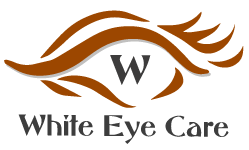Do you find yourself staring at digital screens—computer monitors, cell phones, tablets, televisions—for most of the day? Are your eyes tired, red, or itchy? Are they dry or irritated? If you answered yes to these questions, it’s possible that you may have digital eye fatigue.
Also known as computer vision syndrome or digital eye strain, digital eye fatigue is a common problem among people who spend a significant amount of time staring at digital screens. And in 2023, isn’t that all or most of us? The symptoms of digital eye fatigue include eye strain, dry eyes, blurred vision, and headaches.
Causes and Symptoms of Digital Eye Fatigue
Let’s explore five causes of digital eye fatigue:
- Prolonged screen time is the main cause of digital eye fatigue. As technology continues to advance, it entices us to spend more and more time on digital devices, whether that’s for work, entertainment, or communication. The resulting prolonged screen time can cause a strain on our eyes.
- Blinking Less. An unintended consequence of so much screen time is that people tend to blink fewer times per minute while looking at digital screens. And because blinking is your body’s natural way to lubricate and moisten the eye, blinking less means less moisture — which can irritate the eye and can result in digital eye strain. Yikes!
- Blue Light. Another cause of digital eye fatigue is the blue light emitted by digital screens. Blue light is a type of visible electromagnetic radiation. With a wavelength of 400-495 nanometers, it’s one of the shortest and most energetic types of light. Blue light is found in natural light, but it is also emitted by electronic devices. And you guessed it – blue light can cause a strain on the human eye, leading to digital eye fatigue.
- Poor Sleep. A tired body means tired eyes. Research shows that too much blue light can interrupt your body’s natural production of the hormone melatonin, which regulates sleep. Here’s how that happens: The retina has special ganglion cells that are sensitive to blue light. When exposed to blue light, ganglion cells signal the brain to suppress melatonin production. That means exposure to blue light from electronic devices in the evening can make it harder to fall asleep or lead to insomnia. And less sleep means tired eyes that are more prone to digital eye fatigue.
- Poor lighting can also contribute to digital eye fatigue. If the lighting in a room is too bright or too dim, it can cause your eyes to strain and work harder to see well. That’s why it is important that the lighting in your work or living space is optimal for reading, close work, and other eye-intensive tasks.
Treatment Options for Digital Eye Fatigue
While digital eye fatigue is a common problem among people who spend a significant amount of time staring at digital screens, you can take proactive steps to help reduce the strain on your eyes and alleviate the symptoms.
Here are six options to treat the symptoms of digital eye fatigue:
- Take frequent breaks: Apply the 20/20/20 rule. One of the most effective ways to alleviate digital eye fatigue symptoms is to take frequent breaks from the screen. Take a break every 20 minutes to look at something in the distance, or by using the 20-20-20 rule: Every 20 minutes, take a 20-second break to look at something 20 feet away. And remember to blink!
- Artificial tears or lubricating eye drops are available over the counter at most pharmacies. These eye drops help to lubricate the eyes and relieve dryness and discomfort.
- Blue-light-blocking-glasses. If you can’t limit your screen time, blue-light-blocking glasses can reduce the effects of blue light on the eyes. These glasses have a special lens coating that blocks or filters out the blue light emitted by digital screens. This can help to reduce eye strain and alleviate the symptoms of digital eye fatigue.
- Adjust task lighting to alleviate the symptoms of digital eye fatigue. Make sure that lighting is not too bright or too dim, and that light is not shining directly on the screen, which can create irritating glare.
- Leverage technology to help. Another option is to use computer software that reminds you to take breaks every 20 minutes or so. You could also manually set an alarm to go off every 20 minutes. In addition, set your devices to “night shift” in the display and brightness setting, which will adjust the color temperature of your screen to warmer colors that filter out some blue light.
- Annual comprehensive eye exams. We can’t overemphasize the importance of regular eye exams to ensure that you have the right correction in your glasses or contact lenses, and to rule out any underlying eye conditions or health concerns that may also contribute to digital eye fatigue.
Call us today to make your annual comprehensive eye exam appointment, where we can discuss your symptoms and offer additional help to minimize the annoyance of digital eye strain and help you see your best!


